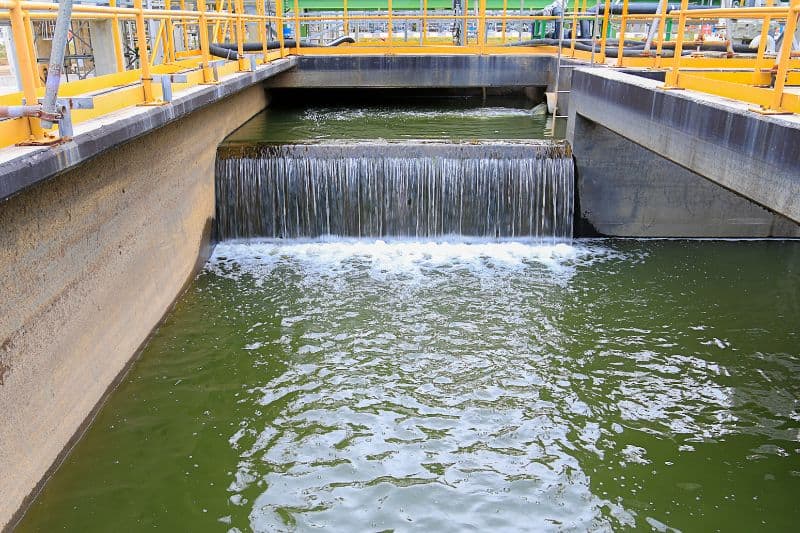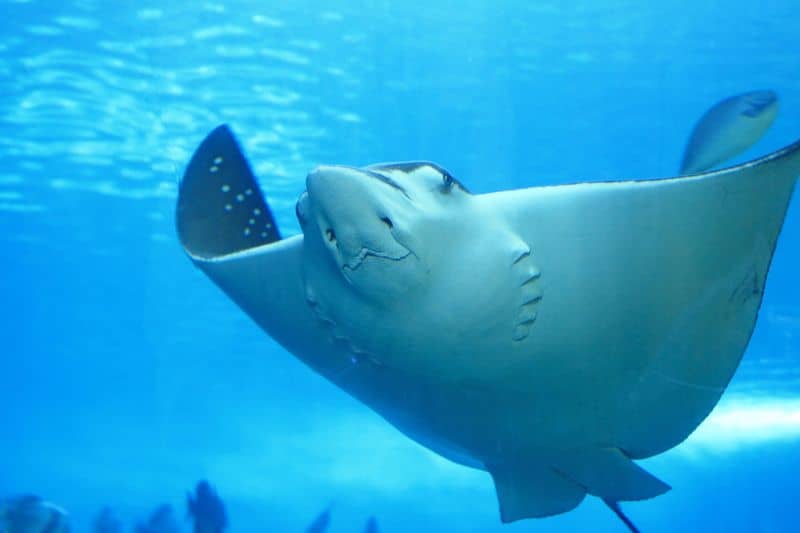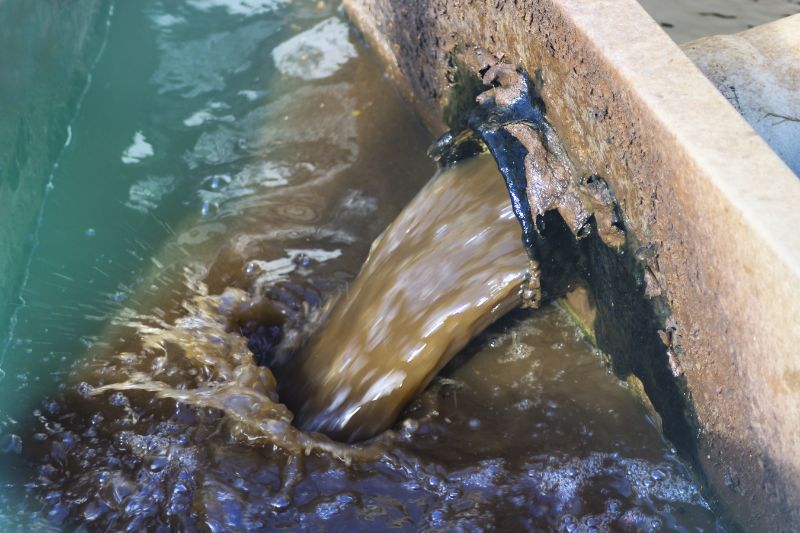Water is essential for life on Earth. It’s what we drink, what plants need to grow, and where animals call home. But sometimes, the water we use becomes dirty and harmful. This dirty water is called wastewater.
Wastewater carries things like soap, chemicals, and germs from our homes and factories. When it gets into rivers, lakes, or oceans, it can hurt the environment in many ways. It can make fish and other creatures sick. It can also make the water unsafe for us to swim in or drink.
Of course, the list of impacts doesn’t end there. In this article, we will examine the effects of wastewater and how bad it is for the environment.
What Exactly is Wastewater?
Wastewater refers to any liquid waste or sewage that comes from households, hospitals, factories, and any other structure that uses water in its facilities.
Think of wastewater as the byproduct of the usage of water. So, whenever you use the faucets or flush a toilet, the water that is used will eventually make it to the ocean and other large bodies of water.
This water is often discharged into a body of water after treatment. However, there are many instances when current wastewater treatment methods are not enough to make it safe for the environment.
But that happens because of two main reasons:
- Increasing Wastewater Volume
- Wastewater Pollutant Levels
Let’s take a closer look at each of these.

Increasing Wastewater Volume
Essentially, any water you use in a household or office will eventually contribute to the volume of wastewater the property produces. The use of water will fall under either internal or external use.
Internal use includes using it in faucets, toilets, and showers. This refers to any water that is coursed through a household’s internal drainage. About 60% of wastewater is made up of water used internally.
External use includes water used to clean garages, irrigate crops, and water gardens. Unlike internally used water, externally used water doesn’t usually make it to sewage systems as it is lost to the soil through absorption or to the atmosphere by means of evaporation. This is what makes up 40% of the total wastewater.
The volume of wastewater produced varies between properties, but the general consensus is that as this wastewater volume surges, effectively treating it becomes difficult.
According to WikiLawn, Austin, Texas, has had some of the highest numbers of newly constructed homes in the past five years, and as a result, the amount of wastewater produced is expected to increase drastically.
Wastewater Pollutant Levels
This ultimately affects the extent to which post-water treatment wastewater affects the environment.
Pollutants include any chemical homeowners flush down their drains: paints, solvents, hormones, oils, herbicides, pesticides, human waste, etc. Combining all these products poses a risk to humans and wildlife alike.
How Bad is Wastewater For The Environment?
The fact that we are making water unusable means that we are literally draining water supplies. Although the Earth’s surface is 71% made up of bodies of water, consider we are dumping waste into those bodies of water.
Plus, the fact remains that despite the huge proportion of water coverage, only 3% of Earth’s water is freshwater, with only 0.5% being accessible. The remaining 2.5% is covered in glaciers and locked in soil, polar ice caps, and atmosphere.
So, as much as it’s easy to assume that there’s plenty of water to support life, that’s not actually the case.
That said, let’s narrow down to how much wastewater is harming the environment.

1. Wastewater Causes Water and Habitat Contamination
The most immediate effect of wastewater on the environment is that it contaminates the rest of the water.
This contamination causes the destruction of natural habitats and can harm and sometimes even kill the wildlife that live in those habitats by exposing them to harmful chemicals that would otherwise not be present over the natural course of things.
2. Squalor
Wastewater is one of the worst sources and carriers of diseases. According to a report from the World Health Organization, more than 3.4 million people die each year from a waterborne disease.
Apart from the sickness wastewater brings, mixing human waste, chemicals, and paints makes smelly fumes. In fact, these fumes are not just bad-smelling; they can also make people breathe in dangerous gases. Inhaling sewage gas is genuinely risky.
3. Soil Degradation
Wastewater is sometimes cleaned and used for watering plants. But even then, it’s not always made completely clean. Water treatment doesn’t always get rid of everything harmful.
Traces of chemicals may be harmful to crops once they find their way to the soil when the wastewater isn’t properly treated. These chemicals will cause the soil to yield fewer crops slowly. Consider also the fact that these crops will eventually be eaten, which can also harm humans.
4. It Contains Harmful Substances
The composition of wastewater may include heavy metals, pathogens, salts, toxic chemicals, oil and grease, solids, nutrients, sludge, acids and bases, toxic organic compounds, and organic and inorganic materials.
This effluent poses numerous hazards for humans, animals, and the environment as a whole. It can be toxic, corrosive, reactive, acidic, and ignitable. Therefore, it must undergo treatment before being reused or redirected into the water supply.
5. Wastewater Affects Quality of Life, Especially for Aquatic Animals
Waterways are generally most at risk of the harmful effects of wastewater. Toxic compounds in the effluent disrupt aquatic ecosystems.
When many biodegradable substances end up in the water, organisms will start breaking them down, using a lot of dissolved oxygen. Dissolved oxygen is critical for marine life to thrive, and as it becomes depleted, it can be life-threatening for fish.
Wastewater also contains oil and grease that are harder to break down and can settle on the water’s surface. This blocks the light needed by photosynthetic aquatic plants, suffocates fish, and can affect birds’ flight abilities.
Heavy metals, such as lead and mercury, are toxic to humans and animals. If someone drank from or ate fish from a contaminated water source, they could suffer serious health effects. The same happens with the animals and plants living in the water.
6. Other Harmful Characteristics of Wastewater
When untreated wastewater gets dumped, it’s often warm or even hot, which can elevate the temperature of the water, further disrupting the ecosystem.
Fish are cold-blooded, so they rely on the water to regulate their own body temperature. If the water is too warm, it can increase respiration, feeding, and movement.
Of course, we still have to acknowledge that the temperature of the water also affects the amount of oxygen in it.
How Do We Mitigate The Effects of Wastewater on The Environment?
As bad as the problem sounds, there are two ways that we can mitigate its impact on the environment. Like most major problems, the wastewater problem needs to be solved through a collective effort. The best way we can contribute towards that effort is to:

1. Conserve Water
The less water we use, the less wastewater we’re going to produce. A few simple ways we can do so is by fixing indoor leaks, reducing shower time, and avoiding any wasteful washing habits.
Switching to water-saving appliances will also help minimize the amount of wastewater produced. This helps water treatment plants process better because if there’s less wastewater, the quality of treatment will be better.
2. Minimize The Polluting Content Of Wastewater
The other factor that makes wastewater so harmful lies in the variety of chemicals that mix with human waste and food scraps. This can be averted by choosing the products we buy carefully.
One of the ways we can do that is by using only low-phosphorus household products to reduce phosphate levels in wastewater. Phosphate is a chemical that is found in most home cleaning products.
3. Innovative Decentralized Water Technology
Using water wisely is crucial because various purposes require different water qualities.
We should encourage the 3R approach:
- Reduce: We should lessen the amount of wastewater we release.
- Treat: Clean the wastewater before disposing of it.
- Reuse: Whenever possible, use treated wastewater again.
Also, decentralized technologies like Eco-friendly Toilets, Constructed Wetlands, and Composting Toilets collect, clean, and manage wastewater right where it’s produced. These methods are helpful for treating waste from homes, small villages, and remote areas.
Decentralized systems offer several benefits:
- Effluent Reuse: These systems allow for the reuse of treated water, reducing the need for fresh water and benefiting the environment.
- Aquifer Recharge: Treated water can be used to recharge underground aquifers, helping to replenish our water sources.
- System Resilience: If one unit has a problem, it doesn’t affect the entire system, making it more robust and reliable.
- Local Development: Small systems can be created and managed by local experts, boosting the local economy and creating jobs.
4. Wastewater Regeneration Technologies
These technologies control both the aeration supplied to the membranes and the aeration of the biological tanks, using an advanced control system permitting lower air consumption (energy consumption) and cutting down on generating GH gases (NOx and CO2).
These technologies also eliminate emergent pollutants and, when necessary, perform sludge filterability by adding substances to the activated sludge through automatically controlled dosing.
The final objective is a self-sufficient treatment plant where the energy required for the plant is produced in the plant itself via the obtainment of biogas or other renewable energies. In this regard, the new technologies being developed aim to increase sustainability in the water treatment sector.
The LIFE-BRAINYMEM research project led by ACCIONA Agua aims to reduce energy consumption in treatment plants and minimize their environmental impact by reducing both GHG emissions to the atmosphere and emergent pollutants in the water, significantly mitigating the environmental impact of the plants.
As mentioned by environmentalists, time and again, the only effective way to combat the effects of pollution is through a collective effort on all levels. What might be seemingly insignificant would pose a great threat if it was performed on a much larger scale. So, do what you can to help save the environment, do it well, and be consistent.






